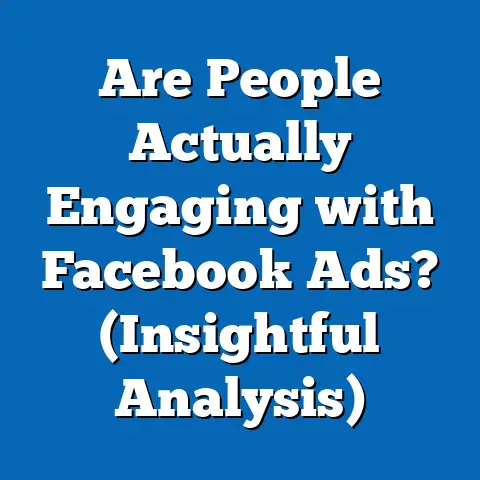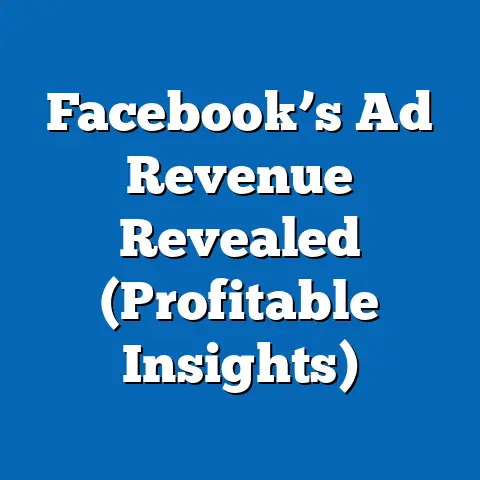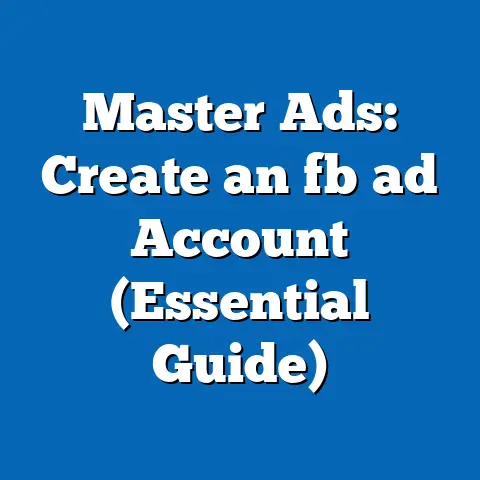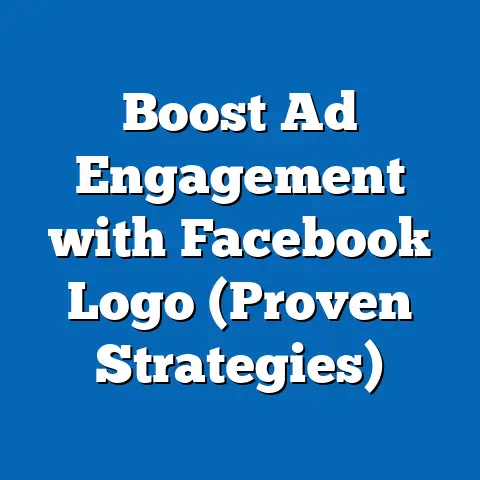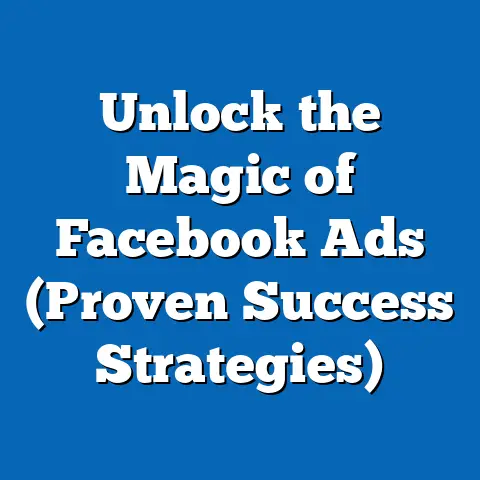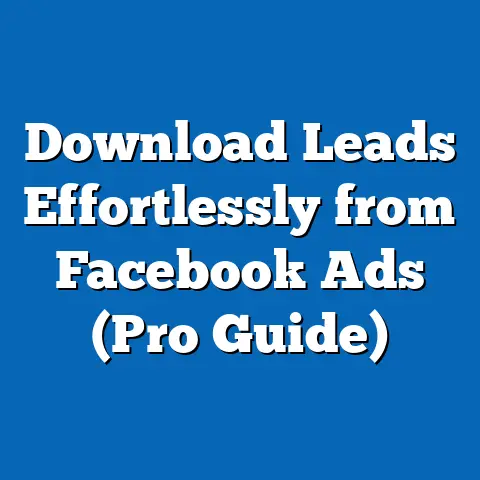Master Local Targeting in Facebook Ads (Proven Strategies)
Facebook advertising has become a cornerstone of modern marketing, offering unparalleled reach and precision. However, for businesses with a local focus, the ability to target specific geographic areas is not just an advantage—it’s a necessity. I’ve seen firsthand how a well-crafted local targeting strategy can transform a struggling brick-and-mortar store into a thriving community hub. Think of local targeting like adding a vibrant pop of color to your marketing palette, making your message resonate more deeply with the people who matter most – your neighbors.
Understanding Local Targeting on Facebook
Local targeting, at its core, is the practice of showing your Facebook ads to people who are physically located in a specific geographic area. This could be a city, a zip code, a radius around your business, or even a custom-defined area. For small and medium-sized businesses (SMBs), local targeting is often the most efficient and cost-effective way to reach potential customers.
Why is local targeting so important? Consider this: a national campaign might reach millions of people, but if your business only operates in a specific city, the vast majority of those impressions are wasted. Local targeting ensures that your ads are seen by the people who are most likely to become your customers – those who live, work, or frequently visit the area you serve.
Facebook’s advertising platform offers a range of features that make local targeting incredibly precise. These include:
- Location-Based Targeting Options: You can target by country, state, city, zip code, or even a specific address.
- Radius Targeting: This allows you to define a radius around a specific point (like your store) and target everyone within that area.
- Geotagging: Facebook uses geotagging to identify users who have recently visited a specific location, allowing you to target them even if they don’t live there.
The effectiveness of local targeting is well-documented. According to a study by HubSpot, location-targeted ads have a 20% higher conversion rate than non-location-targeted ads. I’ve personally seen clients achieve even higher conversion rates by combining local targeting with other advanced strategies, such as custom audiences and retargeting.
Key Takeaway: Local targeting is a crucial aspect of Facebook advertising for SMBs, ensuring that your ads are seen by the people who are most likely to become your customers.
Proven Strategies for Effective Local Targeting
Now that you understand the importance of local targeting, let’s dive into some proven strategies that can help you maximize its effectiveness.
Strategy 1: Utilize Geographical Targeting Options
Facebook’s geographical targeting features are the foundation of any successful local campaign. You can target users based on their country, state, city, zip code, or even a specific address. The key is to choose the right areas to target based on your customer base.
Here are some tips for utilizing geographical targeting effectively:
- Start with Zip Codes: If you have data on where your existing customers live, start by targeting those zip codes. This is a great way to reach people who are already familiar with your brand.
- Expand Your Radius: Once you’ve targeted your core zip codes, gradually expand your radius to reach new potential customers. Be careful not to expand too far, as this can dilute your targeting and waste your ad spend.
- Use City-Level Targeting for Broader Campaigns: If you’re running a campaign to increase brand awareness, city-level targeting can be a good option. This allows you to reach a larger audience without being too specific.
- Exclude Areas That Are Irrelevant: If there are areas within your city or region that are unlikely to be your customers (e.g., industrial areas or areas with very different demographics), exclude them from your targeting.
For example, if you own a coffee shop in downtown Austin, Texas, you might start by targeting the zip codes that surround your location. Then, you could expand your radius to include other areas of downtown Austin, as well as nearby neighborhoods like South Congress and Zilker.
Key Takeaway: Start with zip codes where your existing customers live, expand your radius gradually, use city-level targeting for broader campaigns, and exclude irrelevant areas.
Strategy 2: Leverage Local Awareness Ads
Local awareness ads are a specific type of Facebook ad designed to drive foot traffic to physical locations. These ads are optimized to reach people who are nearby your business and encourage them to visit.
Here are some of the key features of local awareness ads:
- Call-to-Action Buttons: Local awareness ads include call-to-action buttons like “Get Directions,” “Call Now,” and “Send Message,” making it easy for potential customers to take action.
- Address and Map: Your business address and a map showing your location are prominently displayed in the ad, making it easy for people to find you.
- Optimized for Mobile: Local awareness ads are designed to be seen on mobile devices, which is where most people are when they’re looking for local businesses.
To create a local awareness ad, simply select the “Store Traffic” objective when creating your campaign in Facebook Ads Manager. Then, choose the location you want to promote and customize your ad creative.
I’ve seen local awareness ads work wonders for businesses like restaurants, retail stores, and service providers. For example, a local pizza place might use a local awareness ad to promote a lunch special, targeting people who are nearby during lunchtime.
Key Takeaway: Local awareness ads are designed to drive foot traffic to physical locations, featuring call-to-action buttons, address and map, and optimized for mobile.
Strategy 3: Engage with Local Events and Groups
Facebook events and local groups can be powerful tools for promoting your ads and reaching a highly targeted audience.
Here’s how you can leverage local events and groups:
- Promote Your Ads in Relevant Groups: Find Facebook groups that are relevant to your business and participate in the conversations. When appropriate, share your ads or promotions with the group members.
- Sponsor Local Events: Consider sponsoring local events and promoting your ads to people who are attending or interested in the event. This is a great way to reach a highly engaged audience.
- Create Your Own Event: If you’re hosting an event at your business, create a Facebook event page and promote it to your local audience.
For example, if you own a bookstore, you might join local book clubs and share information about upcoming author events at your store. Or, you might sponsor a local literary festival and promote your ads to people who are attending the festival.
Creating engaging ad content that resonates with local interests and events is crucial. Use local landmarks, cultural references, or even local dialects in your ad copy to enhance relatability.
Key Takeaway: Promote your ads in relevant Facebook groups, sponsor local events, and create your own events to reach a highly targeted audience.
Strategy 4: Use Location-Based Custom Audiences
Custom audiences allow you to target specific groups of people based on their behavior or characteristics. Location-based custom audiences take this a step further by allowing you to target people who have recently visited a specific location.
Here’s how you can create location-based custom audiences:
- Use Facebook’s Audience Insights Tool: This tool allows you to see demographic and interest data for people who live in a specific area. Use this data to create custom audiences based on demographics, interests, and behaviors.
- Upload a Customer List: If you have a list of customer email addresses or phone numbers, you can upload it to Facebook and create a custom audience. Facebook will match the data to Facebook users and allow you to target them with your ads.
- Create a Website Custom Audience: If you have a Facebook Pixel installed on your website, you can create a custom audience of people who have visited your website. You can then target these people with ads that are relevant to the pages they visited.
- Target People Who Have Visited Your Business: Facebook allows you to create a custom audience of people who have recently visited your business. This is a great way to retarget people who have shown an interest in your business but haven’t yet made a purchase.
For example, if you own a clothing store, you might create a custom audience of people who have visited your store in the past 30 days. You could then target these people with ads promoting new arrivals or special offers.
Key Takeaway: Use Facebook’s Audience Insights tool, upload a customer list, create a website custom audience, and target people who have visited your business.
Strategy 5: Optimize Ad Creative for Local Appeal
Creating ad visuals and copy that speak directly to the local audience is essential for maximizing the effectiveness of your local targeting efforts.
Here are some tips for optimizing your ad creative for local appeal:
- Use Local Landmarks: Include images of local landmarks in your ads. This will help your ads stand out and make them more relatable to the local audience.
- Reference Local Culture: Use local cultural references in your ad copy. This will show that you understand the local community and are part of it.
- Use Local Dialects: If appropriate, use local dialects in your ad copy. This can make your ads feel more authentic and relatable.
- Highlight Local Events: Promote local events in your ads. This is a great way to connect with the local community and show that you’re involved in the local scene.
- Showcase Local Customers: Feature local customers in your ads. This will help build trust and credibility with the local audience.
For example, if you own a restaurant in New Orleans, you might include images of the French Quarter in your ads. You might also use local terms like “lagniappe” or “po’boy” in your ad copy.
Key Takeaway: Use local landmarks, reference local culture, use local dialects, highlight local events, and showcase local customers in your ad creative.
Monitoring and Adjusting Your Local Ads
Once you’ve launched your local advertising campaigns, it’s crucial to track their performance and make adjustments as needed. Facebook Ads Manager provides a wealth of data that can help you understand how your ads are performing and identify areas for improvement.
Here are some key performance indicators (KPIs) to monitor:
- Reach: This is the number of people who have seen your ads.
- Impressions: This is the number of times your ads have been shown.
- Engagement: This includes likes, comments, shares, and clicks.
- Conversion Rate: This is the percentage of people who take a desired action after seeing your ad (e.g., visiting your website, making a purchase, or filling out a form).
- Cost Per Click (CPC): This is the average cost you pay each time someone clicks on your ad.
- Cost Per Conversion (CPC): This is the average cost you pay each time someone takes a desired action after seeing your ad.
To refine your local targeting efforts, consider A/B testing different targeting options, ad creatives, and campaign strategies. For example, you might test different zip codes to see which ones are most responsive to your ads. Or, you might test different ad creatives to see which ones generate the most engagement.
I’ve found that consistently monitoring and adjusting my campaigns is essential for maximizing my ROI. By paying attention to the data and making small changes over time, I can often significantly improve the performance of my ads.
Key Takeaway: Track your KPIs, A/B test different targeting options and ad creatives, and make adjustments as needed to refine your local targeting efforts.
Conclusion
Mastering local targeting in Facebook ads is essential for businesses looking to thrive in their communities. By understanding the basics of location-based targeting and leveraging advanced techniques like custom audiences and local awareness ads, you can reach the people who matter most – your neighbors.
Facebook advertising is a powerful tool for driving local engagement and sales. By implementing the strategies discussed in this guide, you can see tangible results in your local advertising efforts.
I encourage you to share your experiences with local targeting in Facebook ads and encourage discussions in the comments section or on social media platforms. Together, we can learn from each other and unlock the full potential of local advertising.
Call to Action: Share your experiences with local targeting in Facebook ads in the comments below or on social media using the hashtag #LocalFacebookAds. Let’s learn from each other and help businesses thrive in their communities!

